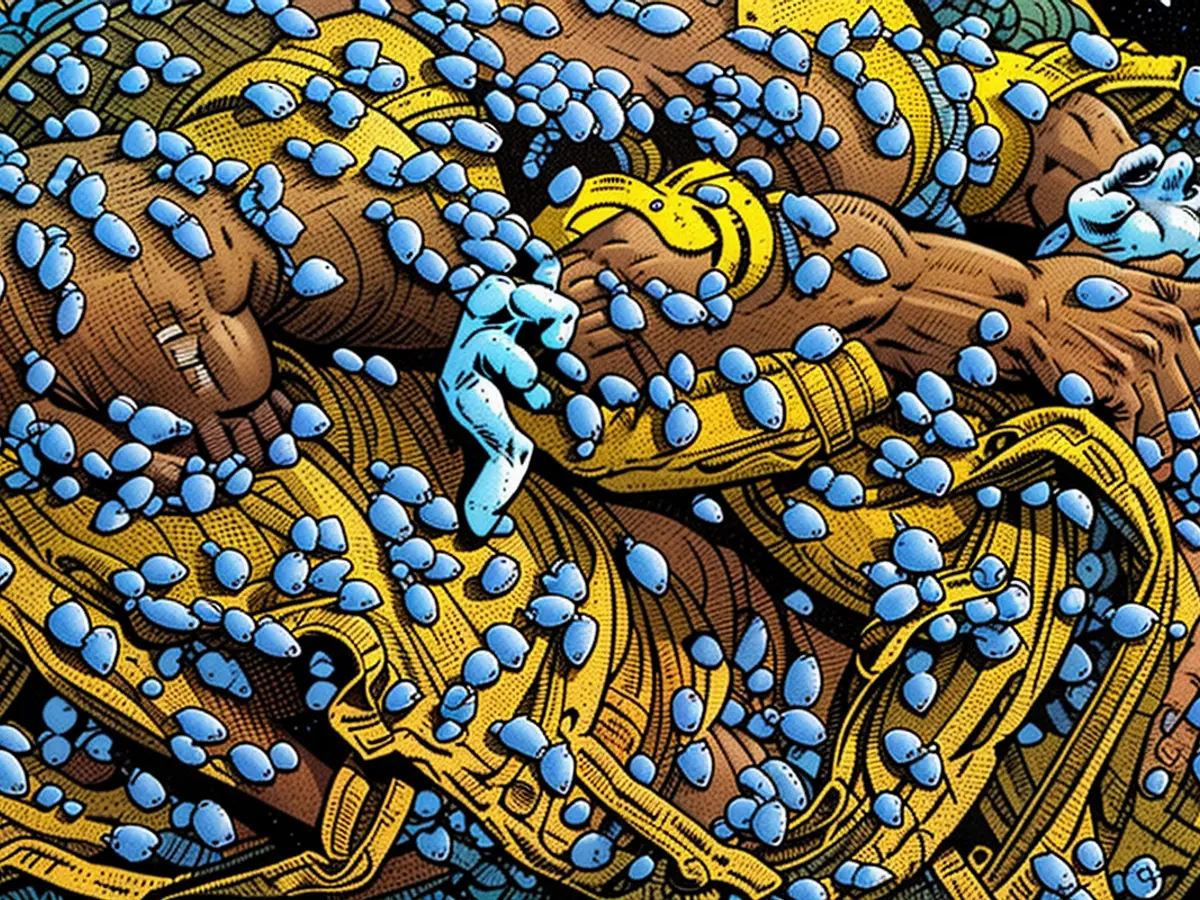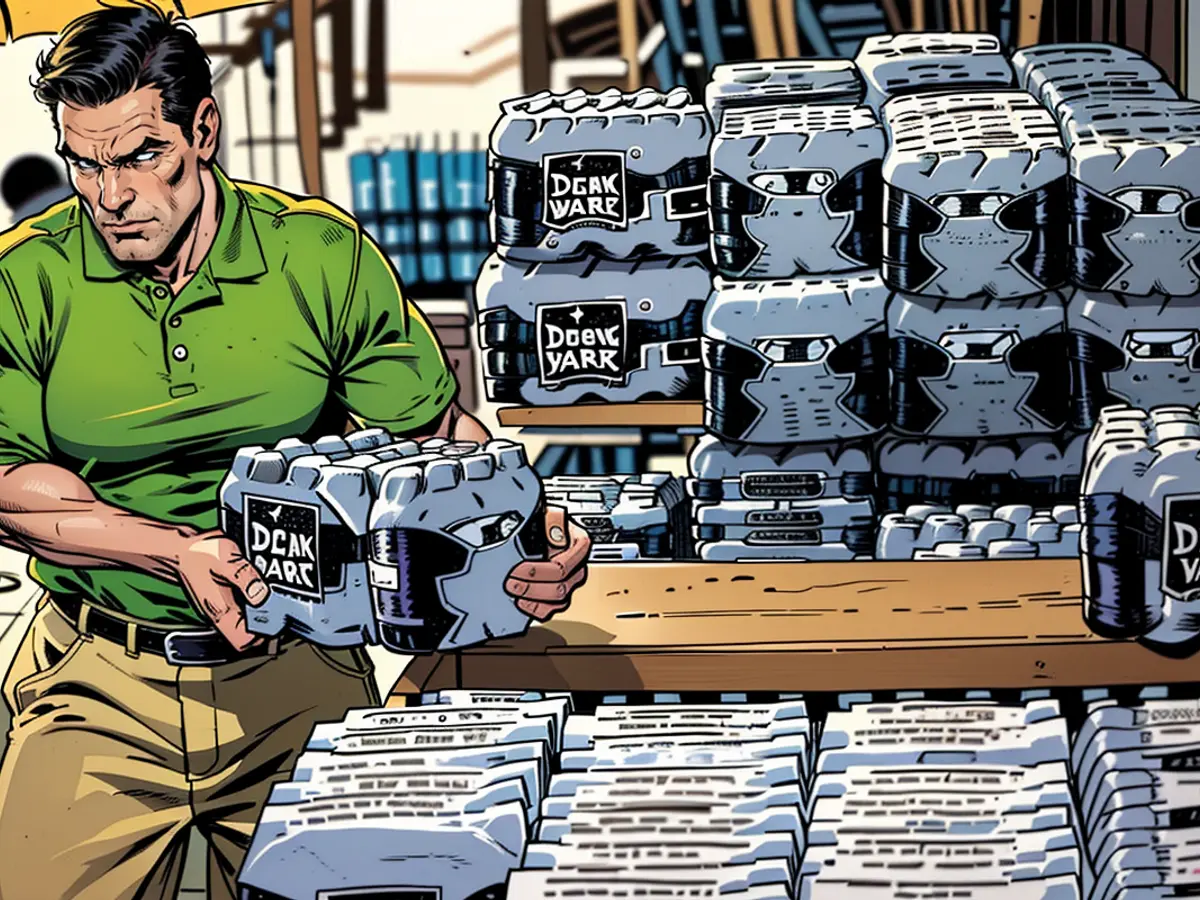Según un estudio reciente, el impacto de la creatividad en el bienestar general y la felicidad supera el del trabajo y el estudio.
Al entrar en la morada de mi abuela, observo cómo sus ágiles dedos tejen hilos en intrincados patrones mientras sus agujas de tejer generan una serie de puntos prolongados. A su lado, hay una torre de mantas, bufandas y ponchos tejidos, todos adornados con llamativos esquemas de color y patrones meticulosamente seleccionados, hechos con lana. Estas obras maestras hechas a mano encuentran su camino en los brazos de los niños en hospitales y hogares de acogida.
Su actividad favorita en su tiempo libre es la artesanía. Está constantemente involucrada en diversas formas de creatividad, como tejer, colorear, arte de raspado o, recientemente, su incursión en el arte de las gemas. Estas actividades artísticas le brindan un nivel de satisfacción y propósito que trasciende sus experiencias laborales.
Ha transmitido su amor por el arte y la artesanía al resto de nuestra familia. Mi madre abrazó la dramaturgia al unirse a grupos teatrales locales durante su época de nido vacío y aprender pintura al agua. Mi primo más joven comparte una pasión por capturar la vibrante esencia de la naturaleza a través de la fotografía, mientras que mi tío, afectuosamente conocido como el padre de mi gemelo y el mío, crea historias humorísticas con actores de voz para su podcast cómico. Mi hermano y yo utilizamos el canto como medio de escapismo durante nuestros años universitarios, lo que nos permitió gestionar nuestras agotadoras cargas académicas.
Creíamos que estas empresas artísticas tenían un impacto positivo en nuestra salud, y la investigación parece estar de acuerdo. Participar en trabajos creativos se ha demostrado que reduce los niveles de cortisol, la principal hormona del estrés del cuerpo.
Según la Dra. Helen Keyes, psicóloga cognitiva y directora de la Escuela de Psicología y Ciencias del Deporte de la Universidad Anglia Ruskin, participar en actividades creativas puede mejorar significativamente el bienestar al ofrecer valiosos espacios para la expresión personal y la logro.
La Dra. Keyes y sus colegas Recently conducted a study examining how creative activities impact overall well-being and potentially reduce feelings of loneliness in everyday life. While prior research has indicated that creating art and crafts provides therapeutic relief for individuals with mental health disorders, the general population had been largely overlooked.
To address this, the researchers examined participants from the general population without diagnosed illnesses, inquiring about how art and craftwork might contribute to overall well-being and potentially alleviate feelings of loneliness. Utilizing data from a major national survey in the UK between 2019-2020, researchers investigated the potential impact of creative activities on life satisfaction, while accounting for variables that impact well-being, such as gender, age, health conditions, employment status, and socio-economic standing.
Over 37% of survey respondents attested to engaging in at least one craft activity during the previous year. The study found a positive correlation between happiness, life satisfaction, and personal feelings of worthwhile living in participants who engaged in creative pursuits. However, creative activities did not significantly decrease anxiety or feelings of loneliness.
While exploring social aspects of creative activities requires further investigation, Dr. Frank Clark, a psychiatrist with Prisma Health and a poet, emphasized the overall benefits of artistic activities on mental health: a boost in self-esteem, reduced anxiety and stress, enhanced communication, and development of creativity. Despite not being involved in the study, Dr. Clark's thoughts illuminate the importance of embracing creative activities for mental wellness.
The researchers suggested that introducing creative crafts into daily routines could promote public health, with governments and healthcare providers considering financing and promoting crafting activities for targeted populations in the hopes of fostering mental wellness and health prevention initiatives.
Crafting allows individuals to achieve a sense of accomplishment and self-expression through the creative process. Dr. Keyes noted that a sense of self-mastery can contribute to overall well-being by allowing individuals to observe their progress and relish in their creations.
If you feel uninspired with your creative abilities, Dr. Clark suggests numerous strategies to help tap into your inner artist: remain open-minded about your potential for creativity, do not be wary of trying new activities, seek out relationships with individuals who are creatively inclined, and consider what fascinated you creatively as a child to spark rekindled interest.
According to Dr. Clark, an economical means of indulging in creativity is coloring, often perceived as a children's activity. However, he encourages adults to embrace colouring books and the numerous health benefits they provide, including fostering social connections, improvement of concentration, and development of creativity.
Embracing creative pursuits can empower individuals, fostering resilience, restoration, and reconciliation. The transformative power of creativity serves as an antidote that can lend a sense of meaning and purpose to our human existence.
Engaging in creative activities, like knitting for my grandma, has been shown to diminish cortisol levels, reducing stress. As Dr. Helen Keyes mentioned, participatory arts and crafts can significantly enhance well-being by providing spaces for self-expression and accomplishment.








